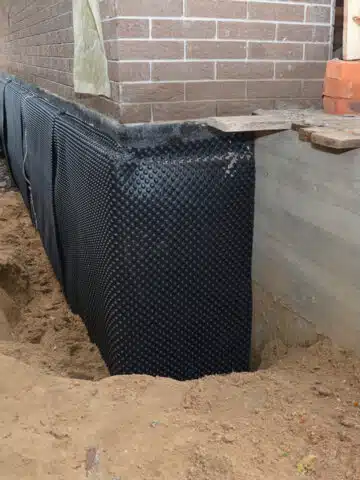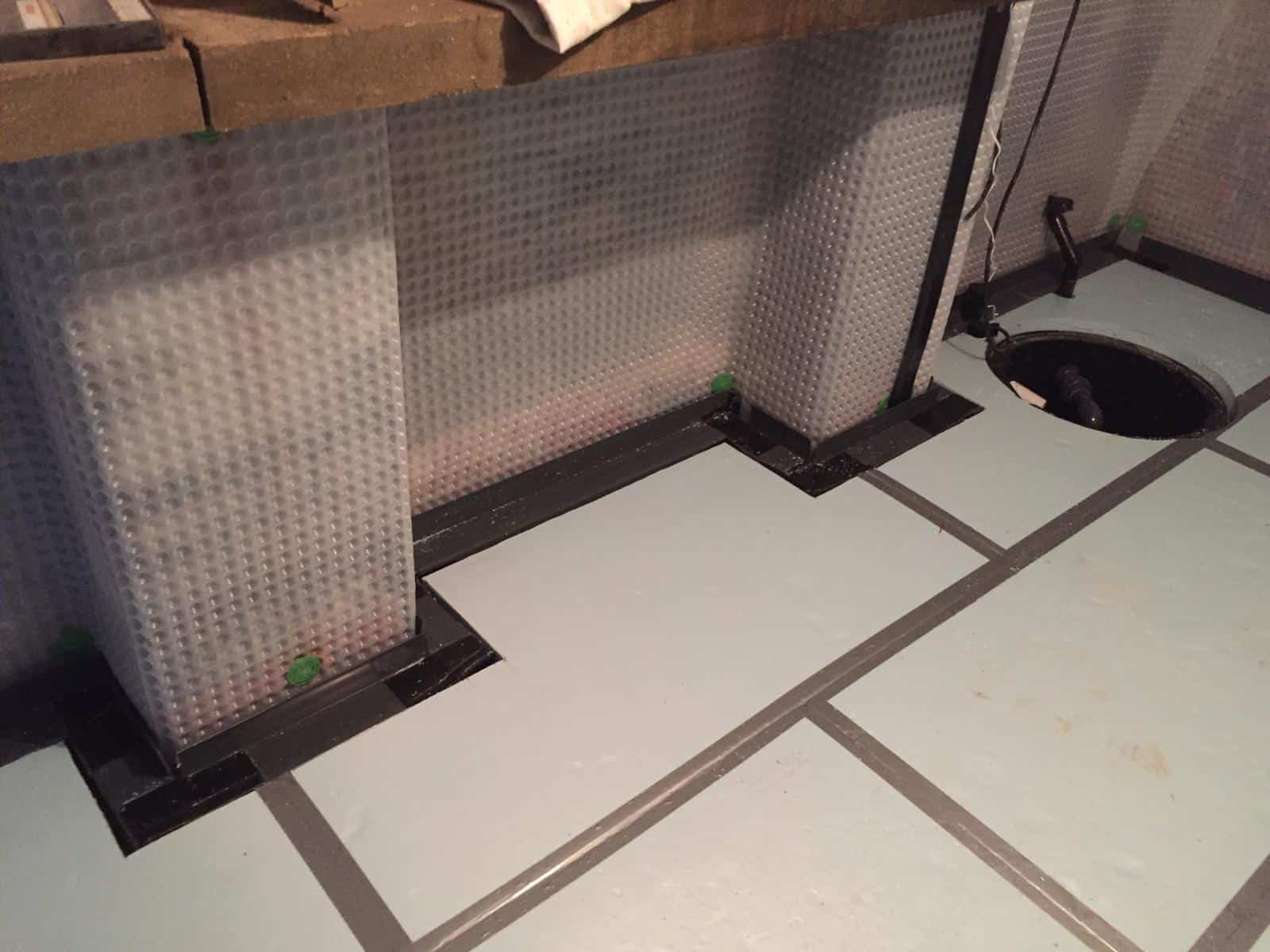Checking Out the Different Methods and Solutions for Effective Damp Proofing
Moisture in buildings postures considerable challenges to both architectural stability and indoor air quality. Various techniques and solutions have arised to battle this pervasive issue. From standard damp-proof membrane layers to cutting-edge chemical therapies, each technique supplies unique advantages. Understanding these choices is vital for effective wetness control. Choosing the best service depends on certain building problems and requirements, triggering additional expedition right into the most reliable wet proofing strategies available.
Understanding the Sources Of Wetness
Although wetness can emerge from numerous sources, comprehending these causes is essential for effective removal. Typically, dampness stems from 3 main sources: climbing moist, penetrating damp, and condensation. Climbing moist happens when groundwater takes a trip up-wards via permeable materials, such as block or stone, often as a result of a lack of an efficient obstacle (mould treatment newcastle). Penetrating moist is generally triggered by external variables, including roof covering leaks, malfunctioning seamless gutters, or harmed wall surfaces, permitting water to penetrate a property. Condensation, on the various other hand, results from excess wetness airborne, frequently exacerbated by bad ventilation and temperature differences, leading to water droplets basing on surfaces. Determining these underlying concerns is important, as each kind of dampness requires a customized strategy for removal. Correct assessment aids in determining one of the most efficient options, ultimately guarding the structural stability of a structure and enhancing indoor air high quality
Conventional Damp-Proof Membranes

Chemical Damp-Proofing Solutions
Chemical damp-proofing remedies offer an ingenious approach to avoid wetness invasion in buildings. These techniques normally include the application of liquid chemicals that permeate masonry and form an obstacle versus rising damp. Generally made use of chemicals consist of silanes, siloxanes, and various other water-repellent representatives that react with surface materials to develop a hydrophobic layer.The application procedure generally requires exploration openings into the walls, injecting the chemical solution, and permitting it to heal. This technique is especially useful for older structures where conventional damp-proof membranes may be impractical. Furthermore, chemical damp-proofing can be less turbulent and much more cost-efficient than considerable restoration projects.While efficient, these services depend on correct application and ecological conditions for peak efficiency. Normal upkeep and tracking are important to assure the durability of the damp-proofing treatment. Overall, chemical damp-proofing stands for a versatile alternative for protecting buildings versus moisture-related damage
Dental Caries Wall Building Techniques
Tooth cavity wall building methods supply various benefits, particularly in wetness control and power efficiency. By integrating an air space between 2 layers of stonework, these walls successfully mitigate water ingress while boosting insulation. This mix not only secures structures from wetness but likewise adds to reduced energy usage.
Advantages of Dental Caries Walls
When considering reliable moist proofing approaches, the advantages of cavity wall surfaces stand out plainly. Dental caries wall surfaces consist of two separate layers, developing an air void that properly lowers dampness infiltration. This layout decreases the risk of wetness, as the outer wall works as an obstacle versus rain and water access. Additionally, dental caries wall surfaces improve thermal insulation, which adds to power efficiency by lowering heat loss. They likewise supply sound insulation, assisting to create a quieter indoor environment. The air void permits for air flow, which helps in wetness control and lowers the possibility of mold and mildew growth. These benefits not just boost the general comfort of a structure yet likewise add to its longevity and architectural honesty.
Wetness Control Techniques
Reliable wetness control approaches are vital in cavity wall surface construction to assure long-lasting defense against wetness. One primary technique entails the consolidation of weep openings, which facilitate water drain from the cavity, protecting against build-up. Additionally, the usage of breathable membranes can help take care of moisture levels while enabling entraped vapor to leave. Appropriate placement of insulation is likewise essential, as it should not block water drainage courses. Furthermore, making sure that the external leaves of the cavity wall surface are constructed with water-resistant products boosts overall longevity. Regular upkeep checks are important to determine any kind of blockages or damage early, guarding the structure's stability. Inevitably, a mix of these techniques develops a robust defense versus dampness invasion in tooth cavity walls.
Insulation and Energy Efficiency
Insulation plays a crucial role in boosting power effectiveness within tooth cavity wall surface construction. By integrating shielding materials, these walls develop a thermal obstacle that reduces heat loss and minimizes energy usage. Reliable insulation not just assists maintain a stable indoor temperature level but likewise reduces the risk of dampness, as it prevents condensation within the wall surface dental caries. Different techniques, such as making use of inflexible foam boards or mineral woollen, can be employed to achieve perfect insulation efficiency. Additionally, correct setup is important to guarantee that voids and spaces are lessened, which can otherwise endanger energy efficiency. Inevitably, a well-insulated tooth cavity wall adds considerably to overall sustainability and decreases heating & cooling expenses for house owners.
Outside Damp Proofing Techniques
External damp proofing techniques are important for safeguarding structures from moisture seepage. 2 reliable strategies include the application of waterproof membranes and the installment of French drains pipes. These solutions assist mitigate water build-up and maintain the integrity of buildings.
Waterproof Membrane Layer Application
While various techniques exist for avoiding dampness ingress, the application of water-proof membranes get more info stays a highly reliable external moist proofing strategy. These membranes are generally made from products such as polyethylene, rubber, or customized bitumen, supplying a durable barrier versus water infiltration. The installation process includes using the membrane layer to the exterior surface areas of walls or structures, ensuring complete protection to avoid leaks. Appropriate attachment and securing at joints are vital to optimizing performance. Waterproof membranes can be applied in various forms, including liquid coverings and sheet membranes, enabling versatility based upon the specific requirements of the structure. This technique not only secures structures from wetness but also improves their durability and architectural stability.
French Drainpipe Installation
One effective method for managing groundwater and avoiding wetness accumulation around a structure's foundation is the installment of a French drain. This water drainage system is composed of a trench filled with crushed rock and a perforated pipeline that reroutes surface area water away from the foundation. Proper installment requires cautious planning, guaranteeing that the drain inclines far from the structure to assist in excellent water flow. Furthermore, the place of the drainpipe is crucial; it should be positioned in locations susceptible to pooling or excess dampness. Routine maintenance, including clearing particles from the gravel and ensuring the pipeline continues to be unblocked, is necessary for long-lasting effectiveness. Ultimately, a well-installed French drain can significantly reduce the threat of water-related problems in structures and basements.
Inside Waterproofing Strategies
Inside waterproofing techniques are crucial for shielding a structure's inside from wetness infiltration and possible water damages. These strategies commonly involve the application of specific materials and techniques designed to produce a moisture barrier within the structure. One typical approach is making use of waterproof layers or sealants on wall surfaces and floorings, which avoid dampness from penetrating surfaces.Additionally, setting up indoor drain systems, such as sump pumps, can effectively take care of water buildup in basements and crawl areas. An additional method involves using vapor barriers, which are installed to prevent dampness movement from the ground into living spaces.Moreover, resolving any cracks or spaces in wall surfaces or structures with appropriate sealants ensures a comprehensive protection versus water breach. By applying these interior waterproofing methods, building proprietors can greatly decrease the risk of mold and mildew growth, architectural damages, and various other moisture-related issues. Appropriate implementation of these strategies is vital for long-lasting defense and structure integrity.
Normal Maintenance and Inspection Practices
Regular maintenance and evaluation methods are crucial for assuring the lasting effectiveness of damp proofing solutions in any structure. Routine checks allow homeowner to determine early indications of wetness intrusion, such as peeling paint, mold and mildew development, and musty smells. These indications can signify underlying issues that require instant attention.Inspections ought to be carried out a minimum of yearly, focusing on prone locations like cellars, crawl areas, and exterior walls. During these analyses, homeowner should check out sealers, drainage systems, and air flow to validate they function correctly.Additionally, maintaining rain gutters and downspouts is important, as clogged up systems can cause water buildup near the structure. Executing a normal maintenance timetable, together with timely fixings, can significantly expand the life expectancy of wet proofing procedures and shield the architectural stability of the building. Positive procedures ultimately add to the general health and wellness and safety and security of the living setting.
Frequently Asked Inquiries
How Much Time Does Damp Proofing Commonly Last?
The duration of moist proofing performance varies, normally lasting in between 20 to half a century. Aspects such as application top quality, environmental conditions, and upkeep techniques considerably affect the long life of the moist proofing therapy.

Can I Damp Evidence My Home Myself?
The private considered the expediency of do it yourself damp proofing. With proper research and the ideal materials, it is feasible. However, they additionally recognized the relevance of expert guidance to ensure long-lasting performance and avoid future issues.
What Are the Indications of Inadequate Damp Proofing?
Indications of inadequate damp proofing consist of consistent musty smells, visible mold and mildew development, peeling paint, wet patches on wall surfaces, and timber degeneration - mould treatment newcastle. Homeowners need to attend to these issues without delay to avoid further damages and health and wellness issues
Does Damp Proofing Affect Indoor Air Quality?

How Much Does Expert Damp Proofing Cost?
Professional moist proofing costs vary significantly, normally ranging from $1,000 to $5,000 depending on the residential or commercial property's dimension, the extent of the damp problem, and chosen approaches. Each scenario requires a customized analysis for precise prices. Frequently, moisture originates from three key sources: climbing wet, penetrating wet, and condensation. When thinking about reliable wet proofing approaches, the benefits of tooth cavity walls stand out plainly. External wet proofing techniques are crucial for protecting frameworks from dampness infiltration. While different approaches exist for preventing dampness ingress, the application of water resistant membranes stays an extremely effective external damp proofing method. Signs of inefficient damp proofing consist of persistent stuffy odors, noticeable mold growth, peeling off paint, damp spots on wall surfaces, and timber decay.
Comments on “Effective ways to manage humidity with mould treatment newcastle”